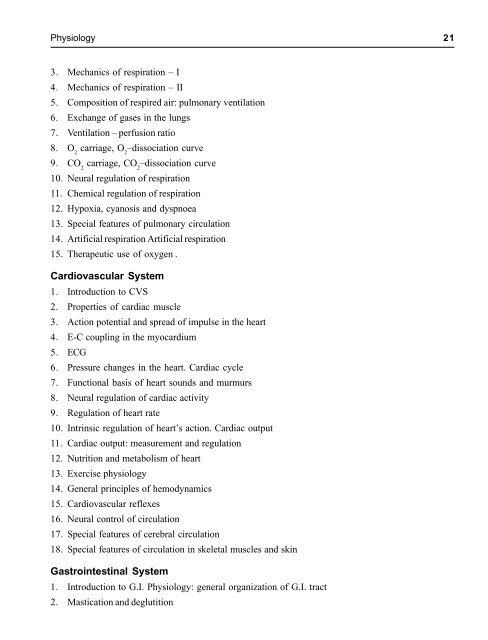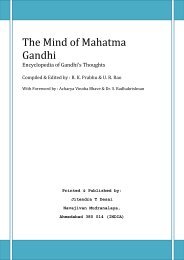Syllabus - MBBS
Create successful ePaper yourself
Turn your PDF publications into a flip-book with our unique Google optimized e-Paper software.
Physiology 21<br />
3. Mechanics of respiration – I<br />
4. Mechanics of respiration – II<br />
5. Composition of respired air: pulmonary ventilation<br />
6. Exchange of gases in the lungs<br />
7. Ventilation – perfusion ratio<br />
8. O 2<br />
carriage, O 2<br />
–dissociation curve<br />
9. CO 2<br />
carriage, CO 2<br />
–dissociation curve<br />
10. Neural regulation of respiration<br />
11. Chemical regulation of respiration<br />
12. Hypoxia, cyanosis and dyspnoea<br />
13. Special features of pulmonary circulation<br />
14. Artificial respiration Artificial respiration<br />
15. Therapeutic use of oxygen .<br />
Cardiovascular System<br />
1. Introduction to CVS<br />
2. Properties of cardiac muscle<br />
3. Action potential and spread of impulse in the heart<br />
4. E-C coupling in the myocardium<br />
5. ECG<br />
6. Pressure changes in the heart. Cardiac cycle<br />
7. Functional basis of heart sounds and murmurs<br />
8. Neural regulation of cardiac activity<br />
9. Regulation of heart rate<br />
10. Intrinsic regulation of heart’s action. Cardiac output<br />
11. Cardiac output: measurement and regulation<br />
12. Nutrition and metabolism of heart<br />
13. Exercise physiology<br />
14. General principles of hemodynamics<br />
15. Cardiovascular reflexes<br />
16. Neural control of circulation<br />
17. Special features of cerebral circulation<br />
18. Special features of circulation in skeletal muscles and skin<br />
Gastrointestinal System<br />
1. Introduction to G.I. Physiology: general organization of G.I. tract<br />
2. Mastication and deglutition



